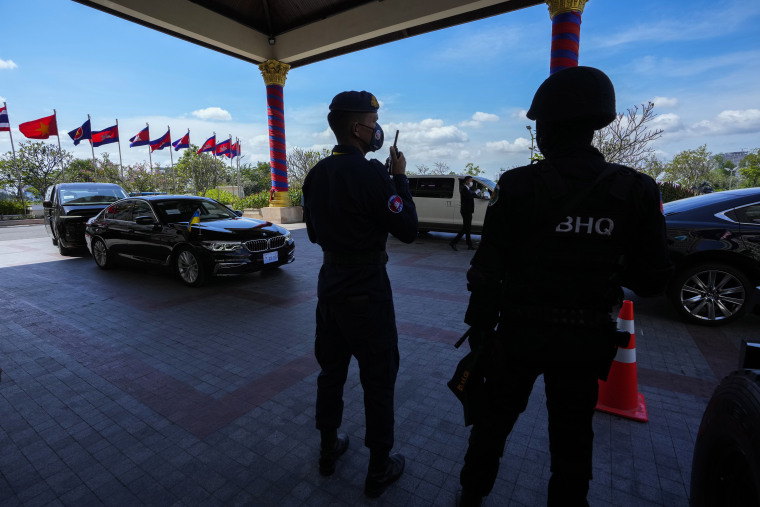BANGKOK — Southeast Asian leaders convene in the Cambodian capital Thursday, faced with the challenge of trying to curtail escalating violence in Myanmar while the country’s military-led government shows no signs of complying with the group’s peace plan.
U.S. President Joe Biden will be on hand for the Phnom Penh summit of the Association of Southeast Asian Nations, which comes as Washington and Beijing are increasingly jockeying for influence in the Asia-Pacific region. It sets the stage for the Group of 20 meetings in Bali, Indonesia, that immediately follow and are expected to include Chinese President Xi Jinping and possibly Russian President Vladimir Putin, then the Asia Pacific Economic Cooperation forum in Bangkok.
In addition to Myanmar, the four-day meetings are expected to focus on ongoing disputes in the South China Sea, pandemic recovery issues, regional trade and climate change.
Neither Xi nor Putin is expected to attend the ASEAN talks or the parallel East Asia Summit, though both China and Russia are thought to be sending high-level delegations.
Looming large over ASEAN, the G-20 and APEC are the Russian invasion of Ukraine, and Russia’s consequent search for new markets for its energy resources, as well as resulting supply chain and food security issues, China’s increasingly aggressive saber-rattling over Taiwan, and rising tension in the Korean Peninsula.
By attending the ASEAN summit in person, Biden will be able to push American interests and also visibly demonstrate Washington’s renewed commitment to the region, said Thomas Daniel, an expert with Malaysia’s Institute of Strategic and International Studies.
Former U.S. President Donald Trump skipped the summits after 2017 and left the 2017 meetings early, before the plenary session of the East Asia Summit, a key regional strategic dialogue, leaving then-Secretary of State Rex Tillerson to stand in for him.
“For Southeast Asia it’s really important to physically show up, and I think the Americans are very aware of this,” Daniel said. “I cannot emphasize how much damage was done by the Trump administration not showing up — and it’s not just not showing up, it’s sending representatives that are seen as just further downgrades.”
ASEAN this year is elevating the U.S. to “comprehensive strategic partnership” status — a largely symbolic enhancement of their relationship but one that puts Washington on the same level as China, which was granted the distinction last year.
Ahead of the summit, Daniel Kritenbrink, U.S. assistant secretary of state for East Asian and Pacific affairs, said the talks would be an opportunity to work on a “broad range of diplomatic priorities across the region” and to focus on “carrying out everything we’ve promised rather than coming forward with another long list of new initiatives.”
“A high-level U.S. presence at these summits will demonstrate our strong and enduring commitment to the region,” he said at a late October roundtable hosted by Washington’s Center for Strategic and International Studies.
“From the president to the secretary of state, throughout the entire U.S. government, we know that America’s future security and prosperity are entirely dependent on what happens in the Indo-Pacific,” he said.
